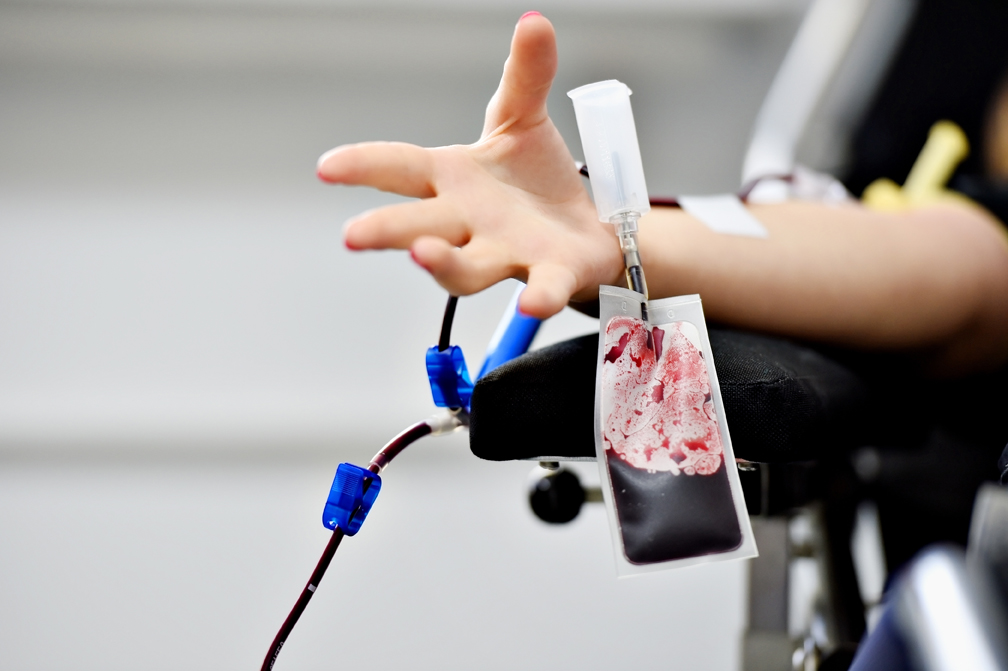Public health issues are never an easy topic t tackle, but the Kenya National Blood Transfusion Service is looking to make a huge impact on the wellbeing of the nation. Endeavour Magazine took a closer look at this organisation that is fast proving to be an angel of mercy for Kenyan communities.

Initially established in Kenya by the Ministry of Health, the Kenya National Blood Transfusion Service (KNBTS) has been given the unenviable task of taking full responsibility for the management of both blood collection and transfusion within Kenya. In order to tackle this gargantuan feat, it has set up six regional transfusion centres, 9 satellite centres and is headquartered in the grounds of the Kenyatta National Hospital Nairobi.
Set the task of conducting itself in accordance with the national policies regarding blood transfusions, collection, distribution and storage, KNBTS has a vision to be,
“A world leader in the provision of safe blood for all.”
And while that might sound like a lofty aspiration, thanks to a rigorous set up and perfectly managed set of core values, this is more than achievable. It also stands KNBTS in good stead that they are working to a humanist and ethically rich mission,
“To provide safe blood for all in an equitable, efficient and effective manner towards improved human health and quality of life in Kenya.”
Quality of life, that is the key phrase here and it resonates throughout the world. As long as you have a pulse, you can recognise the importance of living a life that offers you joy and health and KNBTS strives to facilitate this for even the most unwell patients. There is a level of pride that is undeniable and the organisation has embarked on a number of advertising campaigns that seek to exploit this sense of accomplishment in a bid to encourage more blood donations. In fact, the most recent campaign has run with the strapline “It is something to be proud of”.
KNBTS has listed a number of objectives that it has both set itself and been given by the Ministry of Health and all have a human element at their core. At no point are the patients and people who are in desperate need of the services provided, forgotten or overlooked as part of a business model. They are there at every turn, motivating the organisation to keep striving for more and better. The objectives are to,
“Improve equity and access to blood transfusion services, ensure safety of blood for transfusion, strengthen the organisation and management structure of KNBTS to improve its efficiency and effectiveness, strengthen quality assurance systems and monitoring capacity of KNBTS and to foster partnerships and improve financing of KNBTS activities.”
You can really start to get a handle on the keywords here can’t you? Efficiency, effectiveness, safe. Far from just being mandatory health industry SEO phishing phrases, there is an undeniable sense that everyone involved with KNBTS is there because they want to be, feel a desire to help and know that they can bring something necessary to the table; this goes for management, all the way through to blood delivery drivers and collectors.
So what has driven the need for a dedicated transfusion service? With the 1930s seeing the advent of blood transfusions, things went a little sour from 1985 onwards, when HIV and AIDS diagnosis’ saw a dramatic reduction in the amount of blood being collected. This had an impact on how costly it was, as a resource, meaning that uninfected blood began to fetch a real premium. With most hospitals sourcing their own blood up until that point, the situation became tense and desperate, with the 1998 Nairobi bomb explosion really highlighting the pinnacle of the problem. With US government assistance, the KNBTS was established in 2001, in a bid to stop blood being such a powerfully expensive and hard to come by resource. 15 years on from inception, KNBTS has enjoyed some significant milestones and looks forward to more,
“Progressively, six regional and 10 satellite centres have been established. Blood policy guidelines have been developed, including National Blood Transfusion standards, Hemovigilance manual for transfusing hospitals, Appropriate use of blood and blood products, among others and KNBTS is currently deploying a vein to vein centralised Blood Establishment Computerised system in all its centres.”
While you’d never actually want to need the services of the KNBTS, just imagine what a relief it must be for Kenyan residents to know that there is a health resource in place that has been directly driven and implemented with their best interests and well being at heart.
With responsibility for managing donor services, coordinating blood drives, overseeing blood processing, maintaining storage and distribution, utilisation, bio-safety and security, disaster response and monitoring, you start to get a picture of just how vital and stretched the KNBTS is, as a resource. It relies on the hard work of its core team members, as well as the education and generosity of volunteers who are happy to sacrifice a pint or two for the good of Kenya as a whole. It never seems fitting for such operations to talk about themselves or ask for a pat on the back, but KNBTS should be expecting a lot more tan just a perfunctory pat; they should be embraced by Kenya and thanked for all the lives they have saved. They should be promoted, publicised and congratulated, so that’s what we are doing today.
Saving lives requires sacrifice, dedication and a genuine interest in the human condition and we can’t often say that about large organisations in the modern business world. KNBTS, we salute you.







